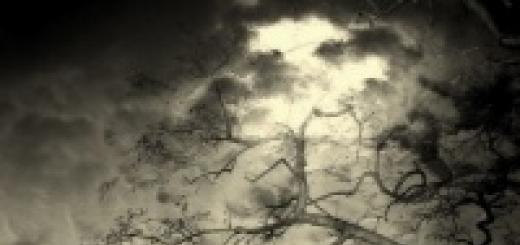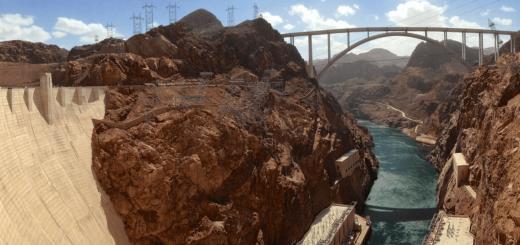Option 1
Part A
Choose the correct answer
The area of Africa is
a) 30.3 thousand km 2
b) 30.3 million km 2
c) 303 million km 2
The northernmost point of the mainland is the cape
a) Ras Hafun
b) Ras Engel
c) Almadi
Much of Africa lies between
a) equator and northern tropic
b) the equator and the southern tropic
c) northern and southern tropics
Crossed South Africa from west to east, explored the Zambezi River
a) Vasco da Gama
b) David Livingston
c) N.I. Vavilov
The Atlas Mountains are located
a) on an ancient platform
b) in the area of new folding
c) in the area of ancient folding
The relief of Africa is dominated by
a) lowlands
b) hills and plateaus
Africa's highest peak
a) Kenya
b) Toubkal
c) Kilimanjaro
The tallesttº on Earth (+58º С) is registered in
a) Tripoli
in Algeria
The formation of the Namib coastal desert is associated
a) with mountainous terrain on the coast
b) with the influence of Antarctica
c) with the cold Benguela current
The longest river in Africa
The longest freshwater lake in the world
a) Victoria
c) Tanganyika
Natural area covering 40% of the mainland
a) equatorial forests
b) savannas
c) deserts
Most modified by human activities
a) deserts
b) equatorial forests
c) savannas
Africa's largest country by area
b) Egypt
Pygmies, Nilotes, Tutsi belong to the race
a) European
b) equatorial
c) intermediate
Part B
Match
natural area Plants and animals
1. Equatorial forests a) grasses, baobabs, giraffes, elephants
2. Savannahs b) palm trees, ficuses, creepers, gorillas, okapis, 3. Deserts c) thorny bushes, lizards, snakes, scorpions
Match
1. Equatorial a) change of TBM and SWM, hot dry summer and wet winter
2. Tropical b) warm and humid throughout the year 3. Subtropical c) hot, dry, TBM dominance
Define
Climate is...
The preserve is...
Part C
Determine the length of Africa from west to east along the equator.
Test tasks on the topic: "Africa" (Grade 7)
Option 2
Part A -Choose the correct answer
Africa is smaller in size than
a) Eurasia
b) North America
In South America
The extreme eastern point of the mainland is the cape
a) Ras angela
b) Ras Hafun
c) Needle
Unlike other continents, Africa intersects
a) the southern polar circle
b) prime meridian
c) almost in the middle of the equator
Rounded South Africa, opened a sea route to India
a) Vasco da Gama
b) David Livingston
c) V.V. Juncker
At the base of most of the mainland lies
a) area of ancient folding
b) area of new folding
c) ancient platform
Raised to a height of more than 1000 m
a) North and South Africa
b) South and East Africa
c) North and West Africa
The highest mountains are
a) Cape
b) Draconian
In much of Africa, the average annualtº air
a) from 10 to 20º C
b) below 10º C
c) above 20º C
The maximum amount of precipitation falls
a) in the Ethiopian highlands
b) on the southwestern slopes of Mount Cameroon
c) in the Congo Basin
The deepest river in Africa
a) Zambezi
The largest lake in terms of area
a) Victoria
c) Tanganyika
Natural area covering 30% of the mainland
a) equatorial forests
b) savannas
c) deserts
Africa's worst natural disaster
a) drought
b) floods
c) earthquakes
The largest country by population
a) Egypt
b) Nigeria
Arabs, Egyptians, Libyans belong to the race
a) European
b) equatorial
c) intermediate
Part B
Match
Natural area Plants, animals
1. Equatorial forests a) aloe, spurge, jackals, hyenas
2. Savannas b) palm trees, ebony, okapi, chimpanzee
3. Deserts c) grasses, umbrella acacias, zebras, hippos
Match
Climatic zone Climate features
1. Equatorial a) 2 seasons: dry winter and wet summer, change of computer and TVM
2. Subequatorial b) constancy, high tº, high humidity
3. Tropical c) hot, dry, large daily tº amplitude
Define
Relief is…
The desert is...
Part C
Determine the length of Africa from north to south along 20º E.
Keys (Africa)
Option I
Part A
Part B
1-b; 2-a; 3-in
1-b; 2-in; 3-a
3. Climate - a long-term weather regime characteristic of a given area.
A reserve is an area where natural complexes are preserved in their natural state.
Part C
43 o - 9 o \u003d 34 o
34 o * 111.3 km = 3784.2 km
Option II
Part A
1-b; 2-in; 3-a
1-b; 2-a; 3-in
Relief - a set of irregularities of the earth's surface, differing in size, origin and age.
The desert is a natural area where there is very little rainfall, vegetation is very rare or completely absent.
Part C
32 o + 35 o \u003d 67 o
67 o * 111.3 km = 7457.1 km
Grading norms
In Part A, each correct answer is worth 1 point (maximum 15 points).
In part B in 1 and 2 tasks for each correctly established correspondence - 1 point; in 3 tasks for each definition - 2 points (maximum 10 points).
For part C - 3 points.
"5" - 26 - 28 points
"4" - 22 - 25 points
"3" - 18 - 21 points
"2" - 17 or less points
Test
African nature
geography teacher
MBOU Rogalikovskaya school
Millerovsky district
Rostov region
Pastukhova L.P.
Instructions for performing work.
Test work includes 30 tasks.
You have 45 minutes to complete all tasks.
Tasks involve choosing the correct answer from the options provided. Answers are written as a number, a sequence of numbers, or a word.
Write your answer according to the given examples:
| № question | Possible answer |
| 3241 |
|
| Savannah |
|
| A1 B4 C3 D2 |
|
Enter the selected answer in the table.
The correct answer is worth 1 point. The maximum score for completing the test is 30.
When doing work, you can use the atlas.
We wish you success!
The work was done by a student of class _____
Surname, name of the student(s) _________________________________
Test "Nature of Africa"
| № question | Possible answer |
| 1 | |
| 2 | |
| 3 | |
| 4 | |
| 5 | |
| 6 | |
| 7 | |
| 8 | |
| 9 | |
| 10 | |
| 11 | |
| 12 | |
| 13 | |
| 14 | |
| 15 | |
| № question | Possible answer |
| 16 | |
| 17 | |
| 18 | |
| 19 | |
| 20 | |
| 21 | |
| 22 | |
| 23 | |
| 24 | |
| 25 | |
| 26 | |
| 27 | |
| 28 | |
| 29 | |
| 30 |
Number of points scored _____
Evaluation for work _______
Test "Nature of Africa"
1. The geographical position of Africa is characterized by the following features:
1. The mainland is more located in the southern hemisphere.
2. The mainland is more located in the western hemisphere.
3. The continent is located in all four hemispheres.
4. The equator crosses the mainland exactly in the middle.
2. Mainland Africa in the distant past was part of:
1. Laurasia
2. Gondwana
3. Pangaea
4. Tethys
3. This is a Scottish traveler - missionary, explorer of Africa. His name named cities, mountains. In 1855, he discovered the waterfall, which he named after the Queen of England. This man fought for the abolition of slavery, converted Africans to Christianity. He gave Africa most of his life, the local population gave him the nickname "Great Lion". Who are we talking about?
1. B. Dias
2. Vasco da Gama
3. D. Livingston
4. V. V. Junker
4. The study of cultivated plants, during which durum varieties of wheat were discovered, was engaged in ...
1. A.V. Eliseev
2. V. V. Junker
3. E.P. Kovalevsky
4. N.I. Vavilov
5. The relief of Africa is dominated by flat territories because ...
1. An ancient platform lies at the base of the mainland
2. There are no high mountains on the mainland
3. There are no folded areas on the mainland
4. Most of the mainland is occupied by deserts
6. This volcano was called the "mountain of caravans", because the glaciers lying on its top were far visible and served as a guide for caravans carrying various goods. Which African volcano is referred to in the text?
1. Cameroon
2. Kilimanjaro
3. Kenya
4. Dallon
7. Arrange geographic features in their order from north to south :
1. Cape Mountains
2. Sahara
3. Congo
4. Atlas
5 Kalahari
8. The main area where gold and diamond deposits are located is
1. Plains of North Africa
2. South and Central Africa
3. Atlas Mountains
4. Northeast Africa
9. Which part of Africa is rich in oil and natural gas
1. Western
2. South
3. North
4. Eastern
10. What form of relief corresponds to the highest point of the mainland
1. Cape Mountains
2. Atlas
3. Dragon Mountains
4. East African Plateau
11. Which mountains correspond to the area of new folding
1. Cape Mountains
2. Atlas
3. Dragon Mountains
4. All of the above
12. This city has geographical coordinates 13 0 NL and 2 0 o.d.
Determine the river on the banks of which this city is located.
13. Which of the following statements are correct. Write down the numbers under which they are indicated.
1. Africa is the hottest continent on Earth.
3. The Sahara is the largest desert in the world.
4. The Nile is the longest river in the world.
14. The channels of dry rivers or temporary streams of Africa, flooded with water during rain, are called:
1. Screams
2. Wadi
3. Samoom
4. Oasis
15. In summer, equatorial VMs dominate:
1. In the tropical climate zone
2. In the equatorial climate zone
3. In the subtropical climate zone
4. In the subequatorial climatic zone
16. Select lakes that were not formed as a result of faults in the earth's crust.
1. Nyasa
2. Tanganyika
3. Chad
4. Victoria
17. Select the option that lists the rivers that belong to the same ocean basin.
1. Nile, Limpopo, Zambezi
2. Niger, Congo, Orange
3. Congo, Nile, Zambezi
4. Limpopo, Niger, Orange
18. The main reason for the formation of the Namib Desert is connected ...
1. With a cold Bengal current
2. With a cold Somali current
3. With mountainous terrain
4. Influenced by the Atlantic Ocean
19. On the coast ... is the driest region of Africa.
1. Gulf of Guinea
2. Somali peninsulas
3. Islands of Madagascar
4. Mediterranean Sea
20. What winds prevail on the mainland throughout the year?
1. Monsoons
2. Breezes
3. Trade winds
4. Western
21. Determine the climate zone according to the description: “It is clear in the morning, clouds gather in the afternoon, and in the afternoon it starts to rain. In a few minutes it is quiet again and the sun is shining.”
1. Tropical climate zone
2. Equatorial climate zone
3. Subtropical climate zone
4. Subequatorial climatic zone
22. Align natural areas and typical representatives of the plant world.
Representatives of the flora Natural zone
1 baobab A. Equatorial forests
2 date palm B. Savannah
3 Velvichia V. Desert
4 larch
5 oil palm
23. Which of the listed animals does not live in the savannas of Africa?
1. Zebra 2. Giraffe 3. Elephant 4. Deer 5. Marabou
24. What soils are typical for the humid equatorial forests of Africa?
1. Red-yellow ferralite
2. Chernozems
3. Brown
4. Yellow and red soils
25. Which natural area of Africa has suffered the most from human activities?
1. Desert
2. Equatorial forests
3. Savannas
4. Zone of hard-leaved evergreen forests and shrubs
26. The multi-layered vegetation cover is typical for ...
1. Deserts
2. Equatorial forests
3. Savannah
4. Hard-leaved evergreen forests and shrubs
27. Which picture shows the okapi animal?




1. 2. 3. 4.
28. The main reason for the diversity and richness of the flora of the equatorial forests is:
1. Fertile soils
2. Dense river network
3. Flat relief
4. Climatic conditions
29. Large ungulates are more common ...
1. In the desert
2. In the mountains
3. In the savannas
4. In the equatorial forests
30. Match the desert of Africa and its image in the picture.
Deserts:
1 Sahara
2 Namib
3 Kalahari




BUTB C D
Pictures:
Answers to the test "Nature of Africa"
| question | Possible answer | Number of points |
| 1 | 3 | 1 |
| 2 | 2 | 1 |
| 3 | 3 | 1 |
| 4 | 4 | 1 |
| 5 | 1 | 1 |
| 6 | 2 | 1 |
| 7 | 42351 | 1 |
| 8 | 2 | 1 |
| 9 | 3 | 1 |
| 10 | 4 | 1 |
| 11 | 2 | 1 |
| 12 | Niger | 1 |
| 13 | 13 | 1 |
| 14 | 2 | 1 |
| 15 | 4 | 1 |
| 16 | 34 | 1 |
| 17 | 2 | 1 |
| 18 | 1 | 1 |
| 19 | 2 | 1 |
| 20 | 3 | 1 |
| 21 | 2 | 1 |
| 22 | A5 B1 B23 | 1 |
| 23 | 4 | 1 |
| 24 | 1 | 1 |
| 25 | 3 | 1 |
| 26 | 2 | 1 |
| 27 | 2 | 1 |
| 28 | 4 | 1 |
| 29 | 3 | 1 |
| 30 | A1 B2 D3 | 1 |
30
Rating "5" - 29 - 30 points
Rating "4" - 22 - 28 points
Grade "3" - 16 - 21 points
Grade "2" - 15 points or less
Tests on the topic "Africa".
Option 1
1. Which of these states has an area of more than 1 million km2 and is washed by the Red Sea?
a) Libya
b) Eritrea;
c) Mauritania;
d) Sudan;
e) South Africa.
2. Select a kingdom with the correct capital:
a) Lesotho - Cairo;
b) Kenya - Nairobi;
c) Morocco - Rabat;
d) Swaziland - Pretoria;
e) Ethiopia - Mogadishu.
3. Select the option in which both of these countries are characterized by very high natural population growth:
a) Egypt, Libya; d) Morocco, South Africa;
b) Senegal, Chad; e) Togo, Niger.
c) Somalia, Mali;
4. Choose the option where countries with a developed oil industry are correctly indicated:
a) Algeria, Gabon, Nigeria;
b) Libya, Ghana, South Africa;
c) Benin, Uganda, Ethiopia;
d) Egypt, Botswana, Chad;
e) Sudan, Mali, Congo.
5. Which millionaire African cities are not capitals?
a) Casablanca
b) Cairo;
c) Addis Ababa;
d) Dakar;
e) Lagos.
a) Africa ranks first among other continents in terms of reserves of gold, platinoids, phosphorites.
b) The peoples living in North Africa speak mainly Arabic and profess Islam.
c) Africa is characterized by the highest rate of urbanization in the world.
d) The colonial type of sectoral structure of the economy has been preserved only in a few African countries.
7. What features of the colonial type of sectoral structure of the economy are named correctly?
a) the predominance of high-value agriculture;
b) lack of monocultural specialization;
c) the predominance of trade and services in the non-productive sphere;
d) high density of roads;
e) poor development of the manufacturing industry.
8. What features are not typical for Tropical Africa?
a) peoples live whose main occupations are hunting, fishing and gathering;
b) there are about 20 least developed countries;
c) the main areas of subtropical agriculture, including irrigated agriculture, are concentrated;
d) most of the settlements are characterized by the Arabic type of city;
a) the oil industry;
b) coal industry;
c) non-ferrous metallurgy;
d) timber industry;
e) chemical industry.
10. The port of Richards Bay in South Africa specializes in the export of:
a) oil;
b) grains;
c) coal;
d) iron ore;
d) forests.
Option 2
1. Which of these states has an area of more than 1 million km2 and is washed by the Mediterranean Sea?
a) Mauritania; d) Congo;
b) Morocco; d) Libya.
c) Sudan;
2. Select a federal republic with the correct capital:
a) Nigeria - Abuja; d) Kenya - Nairobi;
b) Ethiopia - Cairo; e) Zambia - Pretoria.
c) Morocco - Rabat;
3. Select the option that indicates the countries where the largest urban agglomerations in Africa are located:
a) Algeria, South Africa;
b) Sudan, Congo;
c) Kenya, Cameroon;
d) Nigeria, Egypt;
e) Libya, Ethiopia.
4. Select the option where the countries exporting non-ferrous metals are correctly indicated:
a) Algeria, Gabon, Nigeria;
b) Libya, Ghana, Kenya;
c) Benin, Uganda, Ethiopia;
d) Guinea, Zambia, South Africa;
e) Sudan, Somalia, Chad.
5. Which of these countries is not a hotbed of interethnic conflicts?
a) Angola;
b) Rwanda;
in Marocco;
d) Chad;
e) Congo.
6. Choose the wrong statement.
a) Africa ranks first among other continents in terms of reserves of diamonds, manganese and cobalt ores.
b) Due to rare winds, African lands are weakly subject to erosion.
c) Despite the high mortality rate, Africa's population is growing very rapidly.
d) Predominance of subsistence, unproductive agriculture in most African
7. In which country's exports is the share of agricultural raw materials the highest?
a) Namibia;
b) Algeria;
c) Ghana;
d) Libya;
e) South Africa.
8. Which statement applies to North Africa?
a) the western part is distinguished by a very complex ethnic composition;
b) hoe farming without irrigation prevails;
c) the main centers of the oil refining, chemical industry and mechanical engineering are concentrated in the coastal zone;
d) the Swahili language prevails, and among religions - local beliefs;
e) the most important deposits of copper and cobalt ores are located.
9. Which of these industries define the face of South Africa in the international geographical division of labor?
a) peat extraction;
b) uranium mining;
c) textile industry;
d) mining of platinum;
e) sugar industry.
10. The center of the largest industrial region in Africa is the city:
a) Cairo
b) Lagos;
c) Johannesburg;
d) Pretoria;
e) Luanda.
Option 1
1. d. 2. c. 3. e. 4. a. 5. a; d. 6. d. 7. c; d. 8. c; d. 9. b; in; d. 10. c.
Option 2
1. e. 2. a. 3rd year 4th year 5th century 6. b. 7. c. 8. c. 9. b; 10. c.
AFRICA
final test
Option 1
1 The Africans called him a missionary, a traveler and a friend of mankind. His heart is forever in Africa
a. N.I. Vavilov
b. V.V. Juncker
in. David Levingson
Vasco da Gama
2 Place the extreme points of the mainland correctly
1 extreme northern cape a. m. Almadi
2 extreme eastern cape b. metro station Igolny
3 extreme southern cape c. m. Ras Engela (Ben Secca)
4 extreme western cape of m. Ras Hafun
3 Match the location of African territories
1 mountains in the northwest a. East African plateau
3 Gulf of the Atlantic Ocean c. kilimanjaro
4 harsh rocky desert in the southwest of Namib
5 area, where there are many extinct and active volcanoes of the village of Atlas
6 the highest peak of the mainland e. Guinean
4 What climate zone are we talking about?
The warm but dry winter is coming to an end. The rainy season comes suddenly, the savanna is flooded with huge streams of water, the swamps overflow with water, and all the lowlands turn into lakes.
a. equatorial
b. tropical
in. moderate
g. subequatorial
5 Arrange African lakes from north to south
a. Victoria in. Chad
b. Nyasa, Tanganyika
6 Match:
1 Strongest desert wind a. Chad
2 Drainless lake b. wadi
3 Inhabitants of humid equatorial forests c. simoom
4 Pygmies National Park
5 Dry riverbeds in Victoria
6 Waterfall on the Zambezi River E. Tuareg
7 Desert dwellers f. Serengeti
7 Savannahs in Africa occupy vast expanses - about 40% of the area. Nowhere in the world is there such an accumulation of large and diverse animals.
From the list, select savannah animals:
a. leopard
b. a lion
in. zebra
termites
giraffe
e. elephant
and. monkeys
h. gorilla
and. rhinosorg
k. bird marabou
8 Distribute African states by region:
1 East Africa a. Egypt
2 South Africa b. Chad
3 North Africa c. Libya
4 West and Central Africa Nigeria
e. Algiers
e. South Africa
and. Ethiopia
h. Angola
and. Namibia
k. Congo
l. Sudan
9 This ancient state belongs to the region of East Africa. It is located on the highlands, in the fault zone. Earthquakes are frequent here, the craters of extinct volcanoes are dilapidated and occupied by lakes. The country is agricultural, a special place among citrus fruits, pomegranates, cereals and other crops is occupied by the cultivation and collection of coffee. Determine the name of this country from the above list. What is the name of its capital?
1 Cairo
2 Addis Ababa
3 Kinshasa
AFRICA
final test
Option 2
1 Portuguese navigator who opened the sea route to India around the African coast for Europeans:
a. N.I. Vavilov
b. V.V. Juncker
in. David Levingston
Vasco da Gama
2 In terms of area, Africa is second only to:
a. Eurasia
b. North America
in. North America and Eurasia
South America
3 Features of the geographical position of Africa. Find matches:
1 Ocean washing the west coast a. Mozambican
2 The extreme southern cape of the mainland b. Aden
3 Canal connecting the Red Sea with the Mediterranean c. Atlantic
4 Bay in the east of the Canaries
5 Island off the northwestern coast of the village of Somalia
6 The strait separating the island of Madagascar e. Igolny
7 Large mainland peninsula. Suez
4 Which of the named regions receives less than 100 mm of precipitation per year?
a. Cape Mountains Namib
b. East African Plateau e. Ahaggar Highlands
in. Sahara Kalahari
Madagascar s. Atlas Mountains
Why is Africa the hottest continent on Earth?
a. Africa is washed by the warmest ocean of the Earth - Indian
b. Most of the mainland lies between the tropics
in. Here are the largest deserts in the world
d. Hot winds are born here - sandy hurricanes - simum.
6 Select the correct characteristics for the rivers of Africa by matching:
1 The river crosses the equator twice a. Congo
3 The river forms a large delta at. Zambezi
4 On the river is one of the largest waterfalls in the world, Niger
5 The name of the river is translated as "black"
6 The river is the second in the world in terms of high water
7 The Aswan Dam was built on the river
8 Belongs to the Indian Ocean basin
9 Flows through Lake Victoria
10 River of northern latitudes, its mouth in the Gulf of Guinea
7 Select a group of typical plants of the African equatorial forest:
a. eucalyptus, baobab, acacia, sausage tree,
b. date palm, agave, bile tree,
in. ficus, oil palm, mahogany, banana.
8 Which country in Africa is located on two continents?
a. congo
b. Egypt
in. Morocco
Somalia.
9 “This country in West Africa is the most densely populated. The basis of its economy is oil. The country is also rich in iron ore and non-ferrous metal ores. The southern part of the state is located on the swampy plain of the Gulf of Guinea. The main artery of the country is the Niger River. To the north, the forests thin out, giving way to tall-grass savannahs, they are replaced by deserts. ” What country are we talking about?
a. Nigeria b. Congo c. Angola
Test
7 Class. Africa Option 2
1. Mainland Africa in terms of area occupies ... a place among the continents. a) 2; 6)3; at 5; d) 6.
2. Africa is separated from Asia by:
a) Strait of Gibraltar; b) the Suez Canal; c) Bab-el-Mandeb Strait;d) the Mozambique Channel.
3. Specify wrong combination "cape - coordinates ":
a) Ben Secca - 37°N 10° E c) Almadi - 15°N. 17°30"W
b) Igolny - 35°N 20°E d) Ras Hafun - 11°N 52°E
4. Which traveler in Africa collected more than 6,000 specimens of cultivated plants?
a) Vavilov; b) Vasco da Gama; in) Eliseev; d) Livingston.
5. Who explored the rivers and lakes of South Africa?
a) Vavilov; b) Vasco da Gama; c) Eliseev; d) Livingston.
6. Almost the entire territory of the African continent is located within:
a) new folding; b) medium folding; c) ancient folding; d) an ancient platform.
7. The relief of Africa is dominated by:
a) lowlands; b) plains; c) hills; d) plateaus.
8. Africa is one of the first places in the world in terms of production of:
a) hard coal b) oil; c) copper; d) table salt;e) natural gas; e) diamonds.
9. The main factors shaping the African climate include:
a) the position of the mainland at low latitudes;e) proximity to Eurasia;
b) long stretch from north to south;f) the proximity of Antarctica;
in) the position of most of it in the eastern hemisphere; g) the influence of the oceans.
G) the predominance of plateau terrain;
10. Which climate zone in Africa has the most rainfall in January?
a) equatorial; b) subequatorial; c) tropical;d) subtropical.
11. Set a match.
climate zoneType of air masses
summer winter
1. Equatorial
2. subequatorial
3. Tropical
4. Subtropical
a) EV TV
b) EV EV
c) TV TV
d) TV HC
12. The main part of the lakes is located:
a) in the equatorial zone with heavy rainfall;
b) in the fault zone; in) in areas with a dense river network.
13. Which lake has the strongest storms?
14. Natural areas in Africa have a latitudinal
prostration, which is associated with:
a) the position of most of the mainland in low latitudes;
b) features of the configuration of the mainland;
c) the predominance of flat terrain.
15. Set a match.
1. Equatorial forests.
2. Savannas.
3. Deserts.
A. Large animals and tall plants.
B. Numerous beetles, scorpions.
16. Set a match.
1. North A. Pygmies.
2. Desert B. Afrikaners
3. Savannas B. Arab peoples
4. Equatorial forests G. Tootsie, chemist
5. South D. Bushmen
7 Class. Africa Option 1
1. Africa is the most ... mainland. a) dry; b) wet; c) cold; d) hot.
2. Africa is separated from Europe by: a) the Strait of Aden;c) the Strait of Gibraltar;
B) the Suez Canal; d) the Mozambique Channel.
3. Match the capes and their coordinates: 1. Almadi A. 37°N 10°E
2. Igolny B. 35°S 20°E
3. Ben Sekka W. 11°N 52°E
4. Ras Hafun G. 15°N 17°30"W
4. Who determined the outlines of the mainland? a) Vavilov; d) Livingston.
5. Discovered and named Victoria Falls: a) Vavilov; b) Vasco da Gama; c) Eliseev; d) Livingston.
6. Africa is dominated by: a) ancient mountains; b) young mountains.
7. Faults in the earth's crust and volcanic activity were most actively manifested in (on):
a) the Atlas mountains; b) Sahara; c) the East African plateau;d) Dragon Mountains.
8. The highest peak in Africa: a) the city of Kenya; b) volcano Kilimanjaro; c) Margerita Peak; d) Toubkal.
9. The consequences of the position of a large part of/Africa at low latitudes are:
a) large annual amounts of solar radiation;
b) high air temperatures throughout the year;
in) abundant precipitation over most of the mainland;
G) the predominance of the trade wind circulation of air masses;
e) significant areas of deserts and semi-deserts.
10. In what climate zone of Africa are storms and thunderstorms?
a) equatorial; b) tropical; c) subequatorial;d) subtropical.
11. The uneven distribution of the river network in Africa is due to:
a) relief features;c) a large area of the mainland;
b) climatic conditions;d) features of the configuration of the mainland.
12. The widest waterfall in Africa and in the world:
a) Livingston; b) Victoria; c) Stanley d) Angel.
13. What is the reason for the full flow of the Nile River?
a) precipitation; c) groundwater;
b) Atmosphere pressure;d) mountain glaciers.
14. The longest lake in Africa and in the world:
a) Tanganyika b) Victoria; c) Nyasa; d) Chad.
15. What is the local name for Victoria Falls?
a) a raging river c) rattling forest;
b) a falling river; d) thunderous smoke.
16. Correlate:
1. equatorial forests
2. savannas
3. desert
BUT. tall plants and large animals.
B. numerous fucas and scorpions.
B. Diversity of flora and fauna.
17. Set a match.
1. North Africa A. Zaire
2. West Africa B. Algiers
3. Central Africa W. South Africa
4. East Africa G. Nigeria
5. South Africa D. Ethiopia
18. What numbers on the map indicate natural
objects: a) oz. Assal
B) Nubian desert
B) Comoros
D) Senegal river
D) Tibesti highlands
Answers
Option 11. g
2. in
3. 1G 2B 3A 4V
4. b
5. g
6. a
7. in
8. b
9. abc
10. a
11.b
12. b
13. in
14. a
15. g
16. 1A 2B 3B
17. 1B 2G 3A 4D 5V
18. a) 12 b) 14 c) 10 d) 25 e) 23
33 points
Option 2
1. a
2. bv
3. b
4. a
5. g
6. g
7. g
8.ve
9. abd
10. g
11. 1B 2A 3C 4G
12. b
13. b
14. in
15. 1A 2C 3B
16. 1V 2D 3G 4A 5B
17. a) 22 b) 24 c) 21 d) 11 e) 2
34 points
Kuznetsova Nadezhda Gillarevna
geography teacher
MBOU secondary school No. 7 "Cadet school named after. M.T. Kalashnikov"
city of Votkinsk Udmurt Republic










